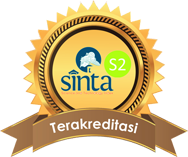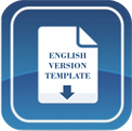Development of Pictorial-based Two-Tier Multiple Choice Misconception Diagnostic Test on Buffer Solutions
DOI:
https://doi.org/10.15575/jtk.v6i2.13219Keywords:
buffer solutions, diagnostic tests, misconceptions, two-tier multiple choiceAbstract
This research aims to develop a Pictorial-based Two-Tier Multiple Choice Misconception Diagnostic Test on Buffer Solutions. This research uses the Development and Validation method. The development steps in this method consist of test development (design); validity and reliability test; development of determination key; use of tests, and analysis of results. Based on the content validity test using the Content Validity Ratio (CVR) method, there are 24 items meet the content validity criteria. Based on the reliability test obtained Cronbach's Alpha value of 0.827 which indicates that the developed test is included in the acceptable category. It can identify high school students' misconceptions about the buffer solutions because the presence of pictures can help students understand the problems about the buffer solutions, and can provide an overview of their mental representations so that misconceptions are revealed more deeply.
References
Adams, W. K., & Wieman, C. E. (2011). Development and validation of instruments to measure learning of expert-like thinking. International Journal of Science Education, 33(9), 1289–1312. https://doi.org/10.1080/09500693.2010.512369
Adodo, S. O. (2013). Effects of Two-Tier Multiple Choice Diagnostic Assessment Items on Students’ Learning Outcome in Basic Science Technology (BST). Academic Journal of Interdisciplinary Studies, 2(2), 201–210. https://doi.org/10.5901/ajis.2013.v2n2p201
Bayrak, B. K. (2013). Using Two-Tier Test to Identify Primary Students’ Conceptual Understanding and Alternative Conceptions in Acid Base. Mevlana International Journal of Education, 3(2), 19–26. https://doi.org/10.13054/mije.13.21.3.2
Benati, A. (2017). The role of input and output tasks in grammar instruction: Theoretical, empirical and pedagogical considerations. Studies in Second Language Learning and Teaching, 7(3), 377–396. https://doi.org/10.14746/ssllt.2017.7.3.2
Cengiz, T. ysuuml; z. (2009). Development of two-tier diagnostic instrument and assess students’ understanding in chemistry. Scientific Research and Essays, 4(6), 626–631. retrieved from https://www.researchgate.net/profile/Cengiz-Tuysuz/publication/254383547
Chandrasegaran, A. L., Treagust, D. F., & Mocerino, M. (2007). The development of a two-tier multiple-choice diagnostic instrument for evaluating secondary school students’ ability to describe and explain chemical reactions using multiple levels of representation. Chemistry Education Research and Practice, 8(3), 293–307. https://doi.org/10.1039/B7RP90006F
Chang, R., Chang, R., & Cruickshank, B. (2008). Problem-solving workbook to accompany General chemistry, the essential concepts, fifth edition, Raymond Chang.
Demircioǧlu, G., Ayas, A., & Demircioǧlu, H. (2005). Conceptual change achieved through a new teaching program on acids and bases. Chemistry Education Research and Practice, 6(1), 36–51. https://doi.org/10.1039/B4RP90003K
Etkina, E., Wenning, C. J., Vesenka, J., & Bryan, J. (2005). J p t e o. 3(2).
Gliem, J. A., & Gliem, R. R. (2003). Calculating, Interpreting, and Reporting Cronbach’s Alpha Reliability Coefficient for Likert-Type Scales. Midwest Research to Practice Conference in Adult, Continuing, and Community Education Calculating, 14(C), 82–88. https://doi.org/10.1016/B978-0-444-88933-1.50023-4
Gurel, D. K., Eryilmaz, A., & McDermott, L. C. (2015). A review and comparison of diagnostic instruments to identify students’ misconceptions in science. Eurasia Journal of Mathematics, Science and Technology Education, 11(5), 989–1008. https://doi.org/10.12973/eurasia.2015.1369a
Haladyna, T. M., & Rodriguez, M. C. (2013). Developing and validating test items. Developing and Validating Test Items, 1–446. https://doi.org/10.4324/9780203850381
Johnstone, A. H. (2000). the Practice of Chemistry Education (Invited Contribution*). Chemistry Education: Research And Practice In Europe Educ. Res. Pract. Eur, 1(1), 9–15.
Law, J. F. (2008). Diagnosis Of Student Understanding Of Content Specific Science Areas Using On-Line Two-Tier Diagnostic Tests. Science And Mathematics Education Centre, April, 1–136.
Lawshe, C. H. (1975). a Quantitative Approach To Content Validity. Personnel Psychology, 28(4), 563–575. https://doi.org/10.1111/j.1744-6570.1975.tb01393.x
Lin, S. W. (2004). Development and application of a two-tier diagnostic test for high school students’ understanding of flowering plant growth and development. International Journal of Science and Mathematics Education, 2(2), 175–199. https://doi.org/10.1007/s10763-004-6484-y
Orgill, M. K., & Sutherland, A. (2008). Undergraduate chemistry students’ perceptions of and misconceptions about buffers and buffer problems. Chemistry Education Research and Practice, 9(2), 131–143. https://doi.org/10.1039/b806229n
Peşman, H., & Eryilmaz, A. (2010). Development of a three-tier test to assess misconceptions about simple electric circuits. Journal of Educational Research, 103(3), 208–222. https://doi.org/10.1080/00220670903383002
Polit, D. F., Beck, C. T., & Owen, S. V. (2007). Focus on Research Methods Is the CVI an Acceptable Indicator of Content Validity? Appraisal and Recommendations. Researchin Nursing & Health, 30, 459–467. https://doi.org/http://dx.doi.org/10.1002/nur.20199
Siswaningsih, W., Firman, H., Zackiyah, & Khoirunnisa. (2017). Development of Two-Tier Diagnostic Test Pictorial-Based for Identifying High School Students Misconceptions on the Mole Concept. Journal of Physics: Conference Series, 755(1), 1–8. https://doi.org/10.1088/1742-6596/755/1/011001
Stojanovska, M., M. Petruševski, V., & Šoptrajanov, B. (2017). Study of the Use of the Three Levels of Thinking and Representation. Contributions, Section of Natural, Mathematical and Biotechnical Sciences, 35(1), 37–46. https://doi.org/10.20903/csnmbs.masa.2014.35.1.52
Surif, J., Ibrahim, N. H., & Mokhtar, M. (2012). Conceptual and Procedural Knowledge in Problem Solving. Procedia - Social and Behavioral Sciences, 56, 416–425. https://doi.org/10.1016/j.sbspro.2012.09.671
Tan, K. C. D., Taber, K. S., Goh, N. K., & Chia, L. S. (2005). The ionisation energy diagnostic instrument: A two-tier multiple-choice instrument to determine high school students’ understanding of ionisation energy. Chemistry Education Research and Practice, 6(4), 180–197. https://doi.org/10.1039/B5RP90009C
Treagust, D. F. (1988). Development and use of diagnostic tests to evaluate students’ misconceptions in science. International Journal of Science Education, 10(2), 159–169. https://doi.org/10.1080/0950069880100204
Whitten, K. W., Davis, R. E., Peck, M. L., & Stanley, G. G. (2013). Chemistry by Kenneth W. Whitten, Raymond E. Davis, Larry Peck, George G. Stanley (z-lib.org). Chemistry, 803–851. Mary Finch, Lisa Lockwood
Zidny, R., & Eilks, I. (2020). Integrating perspectives from indigenous knowledge and Western science in secondary and higher chemistry learning to contribute to sustainability education. Sustainable Chemistry and Pharmacy, 16, 100229. https://doi.org/10.1016/j.scp.2020.100229
Downloads
Published
How to Cite
Issue
Section
Citation Check
License
Authors who publish with this journal agree to the following terms:
- Authors retain copyright and grant the journal right of first publication with the work simultaneously licensed under a Creative Commons Attribution-ShareAlike that allows others to share the work with an acknowledgement of the work's authorship and initial publication in this journal.
- Authors are able to enter into separate, additional contractual arrangements for the non-exclusive distribution of the journal's published version of the work (e.g., post it to an institutional repository or publish it in a book), with an acknowledgement of its initial publication in this journal.
- Authors are permitted and encouraged to post their work online (e.g., in institutional repositories or on their website) prior to and during the submission process, as it can lead to productive exchanges, as well as earlier and greater citation of published work (See The Effect of Open Access).








